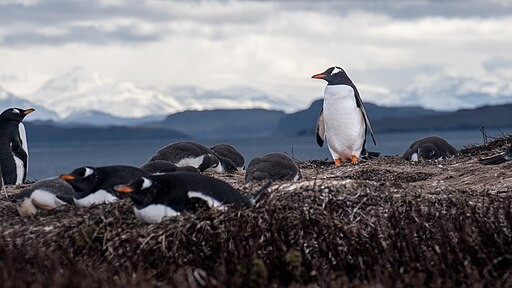Scientists have confirmed avian flu cases among Antarctica's gentoo penguins. The H5N1 virus, first detected on the continent in October 2023, has infected both bird and mammal populations in recent months.

Bird Species Under Threat
On January 19, about 35 dead penguins were found by researchers in the Falkland Islands in the South Atlantic, according to the Scientific Committee on Antarctic Research (SCAR). Veterinarian Dr. Ralph Vanstreels reported that samples taken from two dead penguins returned positive for the H5N1 avian influenza virus.
The Falkland Islands government also noted that many gentoo penguins died under similar cases. As of January 30, more than 200 chicks were found dead alongside a handful of adult penguins.
The reported deaths confirmed the theory that gentoo penguins are susceptible to the highly contagious and deadly disease that has decimated bird populations worldwide in recent months. However, it is known that gentoo penguins rarely travel between the Falklands and the Antarctic Peninsula, which is located 808 miles (1300 kilometers) to the south. That distance means traveling gentoos are unlikely to trigger the spread of the bird flu virus to the southern continent.
According to Vanstreels, gentoo penguins play a role as reservoirs of infection. This means they serve as a medium in maintaining a pool of susceptible hosts that never leave the islands. Since hundreds of thousands of penguins and birds gather in tightly packed colonies in Antarctica and nearby islands, it becomes easy for the deadly virus to jump from one individual to another. Experts also confirmed that as of January 11, avian flu has reached the populations of fur and elephant seals in South Georgia for the first time.
Since 2021, the worldwide outbreak of H5N1 has killed millions of birds on poultry farms, and experts fear that its impact on Antarctic wildlife could be very devastating. The highly pathogenic avian influenza virus can potentially infect 48 species of birds and 26 species of marine mammals in Antarctica.
What Makes Gentoo Penguins Unique?
The Gentoo penguin (Pygoscelis papua) is a species that is most closely related to the chinstrap penguin and the Adélie penguin. The earliest scientific description of this animal was made by Johann Reinhold Forster in 1781.
These aquatic, flightless birds are renowned for their streamlined bodies and remarkable swimming capabilities. They can reach up to 22 miles per hour underwater, making them the world's fastest swimming birds. Gentoo penguins are also considered the third largest penguin species. Their weight and height increase the farther they live from the Antarctic Peninsula.
Compared to other species, they do not have a yearly migration cycle. Instead, they breed only in areas free of snow and ice. Male gentoos are also known for their unique proposal to their potential partner. During courtship, a male penguin looks for the smoothest pebble to offer to a female as a gift. If she accepts it, she will place the pebble in the nest, and the couple will continue to build their mound in preparation for the eggs.
RELATED ARTICLE: Avian Flu Kills Polar Bear for the First Time; More Species Could Be Affected As H5N1 Spreads Across the Globe
Check out more news and information on H5N1 in Science Times.


![Earth's Quasi-Moon Kamo‘oalewa Could Originate From Lunar Surface Not Asteroid Belt [Study]](https://1721181113.rsc.cdn77.org/data/thumbs/full/53275/89/56/50/40/earths-quasi-moon-kamo-oalewa-could-originate-from-lunar-surface-not-asteroid-belt-study.png)











